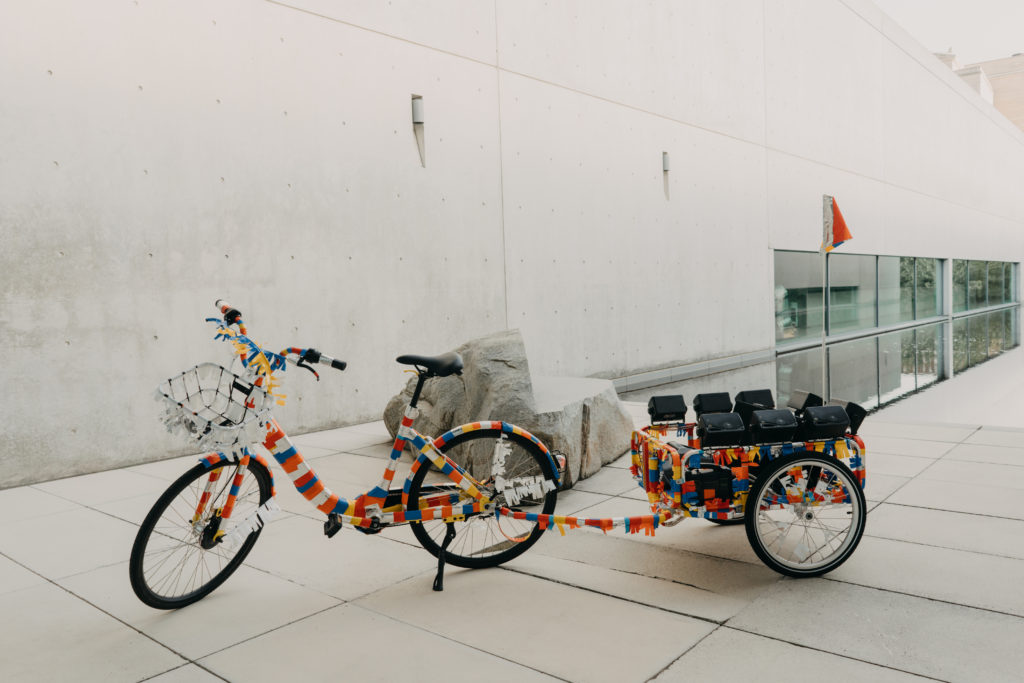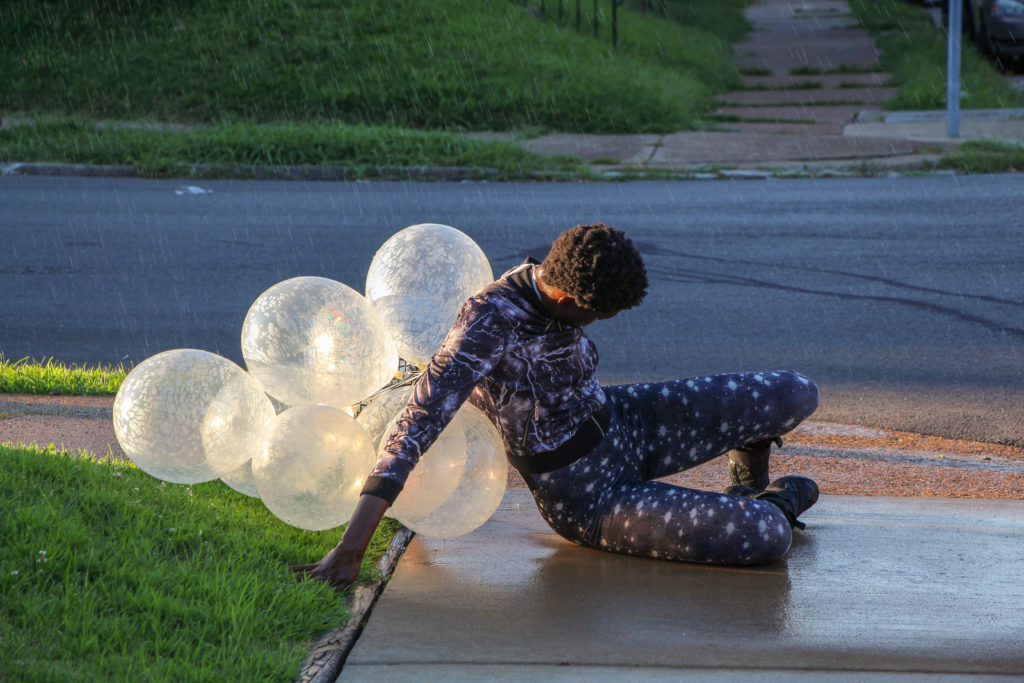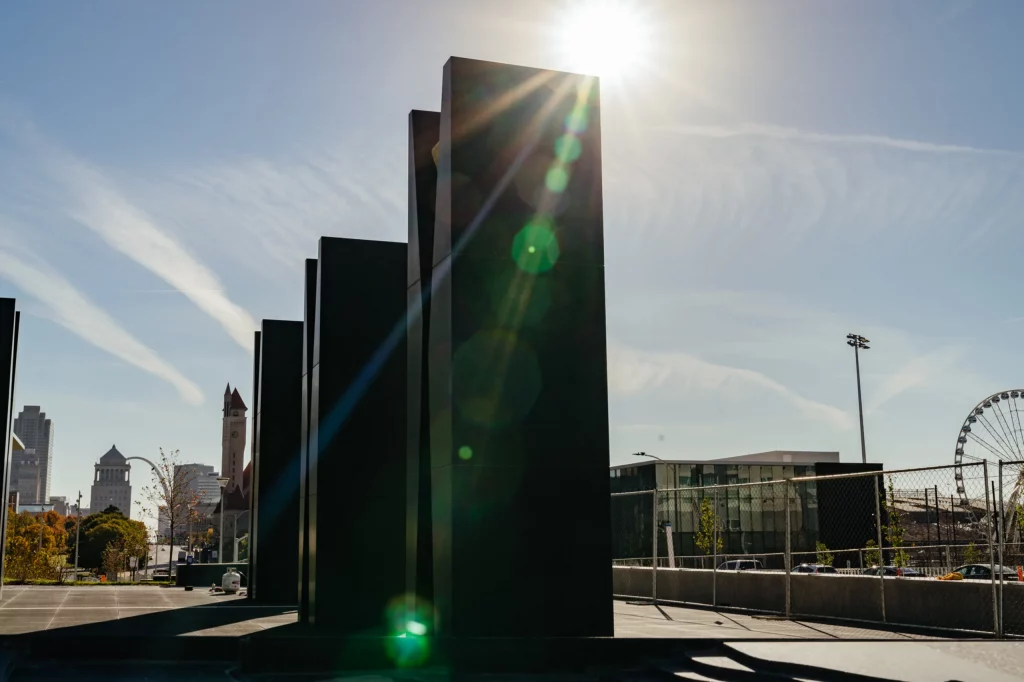Triennials Out of Time: Counterpublic 2023
James McAnally
February 2023
Do you remember when we said we were going to s l o w d o w n ? When we imagined that we would take this opportunity to |stop| ? To reimagine the art world, and our role in it? Did you? Did we?
I spent the better part of the peak-pandemic (we still can’t refer to it as post-pandemic) working three jobs and overseeing four transitions, at least: building out this journal (MARCH) with Sarrita Hunn and other brilliant co-thinkers; attempting to thoughtfully leave the artist space I co-founded and directed, The Luminary, in a sustainable position with capable hands upholding it; helping guide a national network towards necessary sunsetting; and expanding Counterpublic as a triennial civic exhibition emerging out of its 2019 edition to be a free-standing organization. Yet, within this hive of over-activity, a slower, stubborn refusal was arriving. To stop working like that. To not create work for others like that. To not perpetuate that art world, internally or institutionally.
If I have had any single thread through a fifteen-year career careening in the arts, it has been a practice of institution-building aimed at more equitable and more life-affirming models. Every institution is an attempt to form a contour of parts and people, of ideas and publics, of collective agency and activity that coalesce into some greater force for what it means to gather, with enough money, time, and space to sustain itself, for a time. If every public is a form of poetic world-making, then every institution insists on its own public.1 In other words, every institution poses its own poetic world. Someone called that a counterpublic; for me, that stuck. The question, then: What is the world our institutions are making?
I have tried many of them out: publications, networks, residencies, galleries, off-spaces, venues, cooperatives, collectives, public platforms. These shards of worlds have circulated wider than I ever imagined, each offering some slant vision into what an altered art world may look like. With the advent of Counterpublic in 2019, I determined to take on the shape of a triennial. We made an exhibition that stretched The Luminary to its limits (both positively and not), mounting two-dozen artist commissions in a ten-block stretch embedded in a panadería, punk club, teahouse, temple, decommissioned church, vacant lot, bike-based sound system, muffler repair shop, western wear store, greenhouse, and bar.

Matt Joynt, Josh Rios, and Anthony Romero, Piñata Sound System for Counterpublic 2019. Courtesy of Pulitzer Arts Foundation and the artists. Image: Virginia Harold.
What started as a counter-triennial made for a neighborhood contained seeds of life that I had not seen enough of elsewhere in the art world. Joy, for one. Neighboring. Surprise and curiosity. Movement. Possibility, and a laughable challenge. In its aftermath, I couldn’t shake the echoes of the particular institutional form of the cyclical exhibition. As with all my other institutional forms, I wanted to play it differently, to take it apart to see what it is, what it does, what it could be if played along a different scale. In the ensuing years, I decided to go deeper to determine whether this form could, in fact, contain scales of meaning that I had been missing in other attempts. To slow down. To shift out of time, out of tune with the pace of production and institutional meaning-making I had experienced elsewhere. To reimagine the art world and my role within it.
At this point, you could ask a fair series of questions: What about the triennial as a container was so appealing? Aren’t they among the worst perpetrators of the kinds of excesses and abuses the art world is (rightfully) criticized for? In part, for me it was because it is simultaneously the most celebrated and most disabused form in the art world. It arrived already wrecked. Despite this, it seems to still brim with potential.
Cyclical exhibitions fundamentally offer unique possibilities toward both time and scale. Time to see a set of ideas through, to work humanely with others and to work with artists durationally in ways few other forms afford – time to build a poetic world. We know this is not how it actually goes. (See: any review of any biennial.) But why? Is it the instrument, or how it is played? Can it be built with these values intrinsically part of the structure, rather than something that always remains a horizon? Even in its battered form, the triennial suggests a scale of operation and influence that tends toward infrastructure. It exits the singular institution and arrives aspiring to be the air, unavoidable, an intervention into the everyday.
Starting in mid-2020, as I started building Counterpublic into an institutional shape I could believe in, I began to wonder out loud if outside the churn of the contemporary art world, with exhibition calendars stacked year on year, could the slow build and release of the triennial offer a more humane pace that allows proper engagement, inquiry, and reorientation to one’s place and publics? Could triennials and other cyclical exhibitions carry the seeds of other art worlds less reliant on spectacle and extraction that these circuits have long perpetuated? Though these cyclical exhibitions are inherently time-based and typically ephemeral, the model allows for thinking both infrastructurally and ancestrally to leverage change beyond its dates. These questions slowly took shape into an institution.

NIC Kay, pushit! performance for the closing of Counterpublic 2019. Courtesy of Counterpublic and the artist. Image: Melissa Fandos.
Counterpublic was conceived as a triennial civic exhibition and both adopts and adapts the understood forms of cyclical exhibition-making toward other uses. As a triennial, we aim to consider alternate approaches to time as a core part of our form. As a civic exhibition, we attempt to propose a more concrete working theory of how art can be allied with change. “Ennial” exhibitions, in their most superficial sense, share only an approach to time: they happen cyclically, swelling and receding on a set schedule that nests into the hums of institutional movements and the thrumming activities of other art worlds. They occur every two, three, five years, each in succession, and occasionally converging.2 In our formation, we asked, instead, what possibilities exist for the triennial to reimagine relations to the world, working to answer how a cyclical exhibition can use its time to both slow down and deepen relations to place, to process, to multiple communities and (counter)publics. We worked to consider our own temporariness as an opportunity to be better collaborators and conveners – to gather rather than to compete – and to leverage our assets and multi-year time span to create a focused approach toward generational change.
We started with a year-long community engagement process in which we spoke with over 800 individuals and stakeholders in the neighborhoods in which we are working before we invited any artists. We committed to leave over half of our program budgets in community-owned assets after the exhibition ends. As an institution that is itinerant, temporary, cyclical, yet durationally committed to its place, we committed to be a convener, collaborator, and neighbor. In envisioning the exhibition, I aimed for a triennial that allied itself with generational, cultural, economic, and civic change; a post-pandemic, post-uprising exhibition demanding that we, as arts workers and artists, do more to repair our broken world.
This thesis is the beating heart of Counterpublic 2023, an exhibition convened by a curatorial ensemble of curators and artists (Risa Puleo, Diya Vij, Allison Glenn, Katherine Simóne Reynolds, and New Red Order) and featuring thirty artist commissions along a single street that stretches through the length of St. Louis. The projects to be realized will alter the physical and social landscape that they enter, co-creating a park in the only neighborhood without one, proposing ways of seeing and moving through the city, demanding “Land Back” initiatives, and repairing histories through repatriation/rematriation and direct action. The work will be as multiple as any city, counterpublics reckoning with history together.3
Embedded in our name and concept equally is an understanding that we must speak concretely to the fissured publics we engage.4 Counterpublics are a divergent set of publics typically at odds with dominant ideology; they are formed through a temporal and intentional gathering around a space, text, or, in this case, an exhibition. In anthropologist Michael Warner’s words, all cultural activity addressed to a public “must characterize the world in which it attempts to circulate, projecting for that world a concrete and livable shape, and attempting to realize the world through address.”5 Throughout Counterpublic 2023, altered publics will gather, whether for the full three months of the project, or for three hours of a performance, or three minutes of viewing a public artwork – the intersections of artworks and publics erupting new inhabitations of St. Louis.

Damon Davis, Pillars of the Valley for Counterpublic 2023. Courtesy of ST. LOUIS CITY SC and the artist. Image: ST. LOUIS CITY SC.
Can we consider a triennial as an attempt to project livable shapes into this deathless and deathly industry of art? What would that look like? Through the slow cycle of building this triennial, I started to think about a structure that sits alongside cultural institutions, civic structures, and community organizers equally, acting as a neighbor to each of these while remaining a step outside the house. A structure that brings material change to bear as a core component: a world-making public that is not poetic, only. A structure that remains in the air, in the dirt, in the water, after its moment of exhibition is over. Yes, I guess, a structure that you can live within and with, but more molten than that: a brick press, barn raising, wild building. An infra- structure that sits below the other structures, sustaining needed and new structures, bottom-up.
I called it a triennial, a civic exhibition, a time-based material, this institution, this infrastructure. I call the publics it conjures a world, multiple worlds, every time we gather.
Triennials Out of Time is a series of short essays and interviews featuring artistic directors and curators of cyclical exhibitions. Organized by James McAnally for Counterpublic 2023 and published by MARCH: a journal of art & strategy, the series will itself unfold gradually throughout the first several months of 2023.
*This essay contains excerpts from a previously published Artnet editorial and the forthcoming catalog introduction for Counterpublic 2023.
Footnotes
- “A public is a poetic world-making” is one of the tenets from Michael Warner’s “Publics and Counterpublics” in Public Culture 14, no. 1 (Winter 2002): 49–90.
- In 2022, for example, documenta, Prospect New Orleans, FRONT International, Venice Biennale, Manifesta, Toronto Biennial of Art, and numerous others overlapped with divergent formats and interests. For my part, I was tempted to set up a structure that always got longer, as we watch most biennials become triennials. Why stop? Between each edition, it grows from every two years, to three, to four, and more until there is a century between them.
- Of all the meanings of “counter-” the one that remains with me the most is this: “to reckon together.”
- “Counterpublic” comes to us as a readymade with multiple meanings. First circulated in feminist theory by Nancy Fraser and later expanded through Michael Warner’s “Publics and Counterpublics”. Fraser describes counterpublics as “where members of subordinated social groups invent and circulate counter discourses to formulate oppositional interpretations of their identities, interests, and needs.” Nancy Fraser, “Rethinking the Public Sphere: A Contribution to the Critique of Actually Existing Democracy”, in Habermas and the Public Sphere, ed. Craig Calhoun (Cambridge, MA: MIT Press, 1992), 123. Throughout these writings, counterpublics are seen as a means to rethink participatory publics that emerge from marginalized social spaces and communities as counter to dominant forms of power and capital.
- Warner, “Publics and Counterpublics.”
James McAnally is the Executive + Artistic Director of Counterpublic 2023. He additionally serves as an editor and co-founder of MARCH: a journal of art & strategy, was the co-founder and director of The Luminary, an expansive platform for art, thought, and action based in St. Louis, MO, and a founding member of Common Field, a national network of independent art spaces and organizers. McAnally has presented exhibitions, texts and lectures at venues such as the Walker Art Center, Kadist Art Foundation, Pulitzer Arts Foundation, The Artist’s Institute and Gwangju Biennale. McAnally’s writing has appeared in publications such as Art in America, Art Journal, Bomb Magazine, Hyperallergic, Terremoto, and he is a recipient of the Creative Capital / Andy Warhol Foundation Arts Writers Grant for Short-Form Writing.